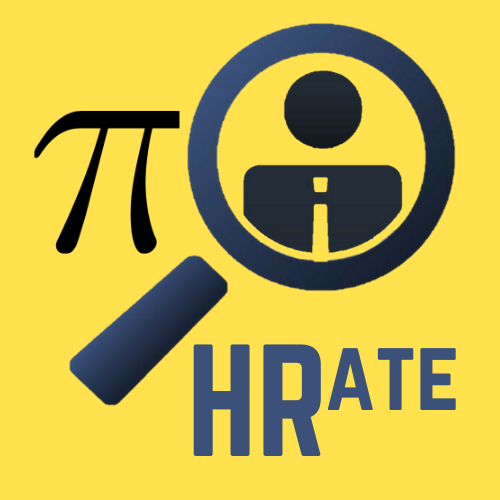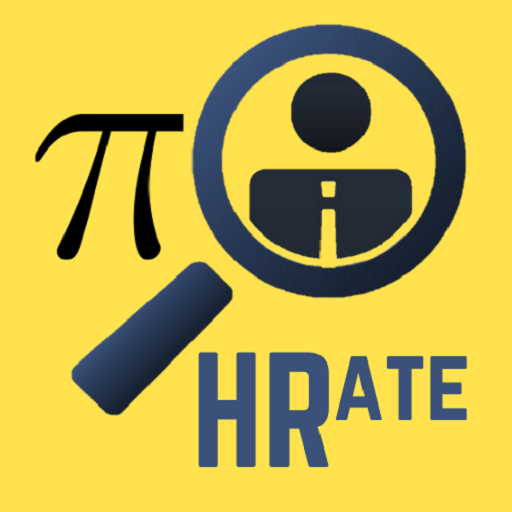How to apply skills-based hiring using GenAI

Generative AI (GenAI) chas revolutionized the way job descriptions are parsed and skills are extracted. This technology enables a more efficient and accurate matching process between job seekers and employers. When parsing a job description, GenAI algorithms analyze the text to understand the required skills and qualifications. By comprehending the context and nuances of the language used, these systems can extract key information such as technical skills, soft skills, and specific experience required for the role. This not only streamlines the recruitment process but also ensures that job seekers are matched with positions that align with their abilities and expertise like skills-based.
Skills-based hiring represents a paradigm shift in talent acquisition, emphasizing a candidate’s practical abilities and competencies as the primary factors in hiring decisions. This approach recognizes that a traditional emphasis on education or job titles may not accurately reflect a candidate’s capacity to perform in a specific role. By honing in on the actual skills required for success, companies can ensure a more targeted and efficient recruitment process. This method becomes particularly pertinent in rapidly evolving industries where specific technical or functional skills are crucial and may not necessarily be acquired through traditional educational routes.
In contrast to the conventional recruitment model, skills-based hiring prioritizes a candidate’s potential contributions over pedigree, fostering diversity and inclusivity. This shift is beneficial not only for job seekers who may possess valuable skills but lack traditional qualifications but also for employers seeking to tap into a broader talent pool. It allows for a more accurate assessment of a candidate’s readiness to undertake specific job responsibilities, enabling organizations to align their workforce more closely with the demands of the evolving job market. Furthermore, skills-based recruiting encourages ongoing learning and development, as employers focus on a candidate’s ability to adapt and acquire new skills over time.
The article “Skills-Based Hiring Is on the Rise” in Harward Business Review by by Joseph Fuller, Christina Langer, and Matt Sigelman discusses the phenomenon of “degree inflation” that emerged in the early 2000s, where employers started requiring degrees for jobs that traditionally didn’t necessitate them. This trend intensified after the 2008-2009 recession. The authors examine whether companies have reversed this trend and the role COVID-19 has played. They identify two ongoing waves of change: a structural reset that began in 2017 and a cyclical reset triggered by the pandemic in 2020.
The structural reset involves employers de-emphasizing degrees when there’s high demand for talent, particularly noticeable in middle-skill positions. The shift focuses on assessing candidates based on demonstrated skills and competencies rather than degree completion. However, the analysis reveals that 37% of middle-skill job descriptions still maintain degree requirements, impacting approximately 15.7 million potential employees.
The cyclical reset, prompted by the urgency to find skilled workers during the pandemic, led many employers to temporarily forgo degree requirements. This shift, observed in about 27% of middle- and high-skill occupations, may be a temporary response to the emergency.
Despite announcements about eliminating degree requirements, the study of information-technology job announcements at leading companies reveals that many still demand degrees, indicating a gap between policy and practice. The authors note that employers may still value degrees as proxies for “soft skills” like communication and teamwork, which are harder to assess directly. Employers eliminating degree requirements often compensate by emphasizing specific soft skills in job postings.
The authors argue that reducing reliance on inflated degree requirements is crucial for increasing equity in the labor market. They stress the importance of a thoughtful reset in hiring practices, enabling previously overlooked workers to pursue attractive career paths without a four-year degree while helping companies fill positions more effectively.
Implementing skills-based recruiting involves a comprehensive strategy, including the redesign of job descriptions, the incorporation of skills assessments, and the utilization of modern technology to facilitate the evaluation process. Companies engaging in this approach need to foster a culture that values skills development, providing opportunities for employees to continually enhance their expertise. As the job market continues to evolve, skills-based recruiting stands as a progressive and adaptive method that not only benefits employers but also empowers individuals to showcase their talents and contribute meaningfully to the workforce.
How to apply skills-based recruiting
Skills-based recruiting focuses on assessing and hiring candidates based on their skills and abilities rather than solely on their education or previous job titles. Implementing skills-based recruiting involves several key steps:
- Define the Required Skills:
- Clearly outline the skills necessary for success in a particular role. This may involve collaboration with hiring managers, team members, and other stakeholders. Identify both hard skills (technical skills) and soft skills (communication, teamwork, etc.).
- Update Job Descriptions:
- Revise job descriptions to emphasize the skills required for the position. Clearly communicate the expectations and the impact of those skills on the success of the role.
- Use Skill-Based Assessments:
- Implement skills assessments during the application process. This could involve practical tests, coding challenges, or other assessments relevant to the position. These assessments provide a more accurate measure of a candidate’s abilities.
- Leverage Technology:
- Use technology to streamline the skills assessment process. There are various tools and platforms available that allow for automated skill testing and evaluation. These tools can help in efficiently screening candidates based on their skills.
- Prioritize Skills in Resumes:
- During the resume review process, focus on the candidate’s skills and experiences that directly relate to the job requirements. Look for evidence of practical application of skills in previous roles.
- Implement Blind Hiring Techniques:
- Consider implementing blind hiring practices, where certain information (such as the candidate’s name, gender, or alma mater) is removed from resumes to reduce unconscious biases. This helps in ensuring that candidates are evaluated based on their skills rather than personal characteristics.
- Conduct Skills-Based Interviews:
- Design interview questions that assess a candidate’s skills in action. This may involve scenario-based questions, technical challenges, or role-specific problem-solving exercises. Behavioral questions can also provide insights into a candidate’s soft skills.
- Involve Team Members:
- Include team members in the hiring process, especially those who will be working closely with the new hire. This ensures that multiple perspectives are considered, and the evaluation is more comprehensive.
- Provide Training Opportunities:
- If a candidate lacks some of the skills but shows potential and a willingness to learn, consider offering training opportunities. This approach allows you to develop existing talent and maintain a focus on skill development.
- Monitor and Adjust:
- Regularly review and adjust your skills-based recruiting process based on feedback, candidate performance, and evolving job requirements. Continuous improvement is key to an effective recruitment strategy.
Skills-based recruiting is beneficial in identifying candidates who can immediately contribute to the organization’s success. It also promotes diversity and inclusivity by focusing on what candidates can do rather than their background or credentials.
Using high-tech in skills-based recruiting
High-tech tools play a crucial role in optimizing skills-based recruiting by streamlining processes, assessing capabilities more effectively, and ensuring a data-driven approach. Here are some essential tools that recruiters can leverage in skills-based recruiting:
- Applicant Tracking System (ATS):
- An ATS helps manage the entire recruitment process, from posting job openings to collecting resumes and communicating with candidates. Modern ATS often includes features like resume parsing, allowing recruiters to extract relevant skills and experiences efficiently.
- Skills Assessment Platforms:
- Platforms like Codility, HackerRank, or Vervoe offer skill-specific assessments and coding challenges. These tools enable recruiters to evaluate a candidate’s technical abilities objectively. They are particularly valuable for roles requiring specific hard skills, such as software development or data analysis.
- Video Interviewing Platforms:
- Video interviewing tools like HireVue, Spark Hire, or VidCruiter facilitate remote interviews and assessments. Recruiters can use these platforms to gauge both technical skills and soft skills, such as communication and problem-solving, in a virtual setting.
- AI-Powered Recruitment Software:
- AI-driven tools like Ideal, Entelo, or AllyO use machine learning algorithms to analyze resumes, predict candidate success, and match candidates to suitable roles based on their skills and experiences. These tools help automate the screening process and enhance the efficiency of candidate matching.
- Data Analytics and Reporting Tools:
- Tools like Tableau, Power BI, or Google Analytics can be employed to gather and analyze recruitment data. Recruiters can gain insights into the effectiveness of their skills-based recruiting strategies, track the success of hired candidates, and make data-driven decisions to improve the process.
- Chatbots and Virtual Assistants:
- Implementing chatbots like Olivia by Paradox or Mya Systems can enhance the candidate experience. These virtual assistants can engage with candidates, answer questions, and collect preliminary information about skills and experiences, saving recruiters time and providing a more interactive application process.
- Social Media and Professional Networking Platforms:
- Platforms like LinkedIn or specialized industry forums enable recruiters to identify and connect with candidates based on their professional networks and skills. Social media can also serve as a valuable source for identifying passive candidates with niche skills.
- Automated Reference Checking Tools:
- Tools such as SkillSurvey or Checkster automate the reference-checking process, allowing recruiters to collect feedback from previous employers efficiently. This provides additional insights into a candidate’s skills, work ethic, and overall suitability for the role.
- Collaboration and Communication Tools:
- Efficient collaboration tools like Slack, Microsoft Teams, or Asana facilitate communication among recruiting teams, ensuring seamless coordination in evaluating and assessing candidates based on their skills.
By integrating these high-tech tools into their skills-based recruiting strategy, recruiters can not only streamline the hiring process but also make more informed decisions about candidates, ultimately leading to a more effective and agile workforce.
Role AI in skills-based recruiting
Artificial Intelligence (AI) plays a significant role in enhancing skills-based recruiting by introducing efficiency, objectivity, and data-driven decision-making into the process. Here’s how AI is leveraged in skills-based recruiting:
- Resume Screening and Parsing:
- AI-powered tools can quickly analyze and parse through large volumes of resumes, extracting relevant information about a candidate’s skills, experiences, and qualifications. This significantly reduces the time recruiters spend on manual resume screening.
- Candidate Matching:
- AI algorithms can compare candidate profiles with job requirements, ensuring a more accurate and objective match based on skills. These systems learn from historical data to improve the precision of matching candidates to specific roles, increasing the likelihood of finding the best fit.
- Predictive Analytics:
- AI-driven predictive analytics tools can assess historical hiring data to predict a candidate’s success in a particular role based on their skills and experiences. This helps recruiters make more informed decisions about the potential success of a candidate within the organization.
- Skills Assessment and Testing:
- AI is integrated into skills assessment platforms to create adaptive tests that dynamically adjust difficulty based on a candidate’s responses. This ensures a more accurate evaluation of a candidate’s skill level in real-time, providing a comprehensive view of their capabilities.
- Chatbots for Initial Screening:
- AI-powered chatbots can engage with candidates during the initial stages of the recruitment process, collecting information about their skills, experiences, and preferences. This not only saves time for recruiters but also creates a more interactive and candidate-friendly application experience.
- Behavioral Analysis:
- AI tools can analyze candidate interactions during video interviews, assessing non-verbal cues and behavior to provide insights into soft skills such as communication, teamwork, and problem-solving. This adds a valuable dimension to skills assessment beyond the technical aspects.
- Continuous Learning and Adaptation:
- AI systems continuously learn and adapt to changing recruitment trends, candidate preferences, and evolving job requirements. This adaptability ensures that the skills-based recruiting process remains dynamic and aligned with the current needs of the organization.
- Diversity and Bias Mitigation:
- AI can be programmed to reduce unconscious biases in the hiring process. By focusing solely on skills and competencies, AI systems help minimize biases related to factors such as gender, ethnicity, or educational background, promoting a more diverse and inclusive workforce.
- Personalized Learning Paths:
- In cases where upskilling or reskilling is required, AI can suggest personalized learning paths based on an individual’s current skills and the skills required for a specific job. This assists both recruiters and candidates in identifying areas for development.
- Efficient Communication:
- AI-powered communication tools can automate responses to candidates, schedule interviews, and provide updates on the recruitment process. This ensures a streamlined and timely communication flow, enhancing the overall candidate experience.
While AI brings numerous advantages to skills-based recruiting, it’s crucial to strike a balance between automation and the human touch. Recruiters should remain actively involved in decision-making, particularly when it comes to assessing nuanced skills and cultural fit. The combination of AI and human expertise can create a powerful and effective skills-based recruiting strategy.
The next table includes popular recruiting systems that incorporate AI. Keep in mind that the features and capabilities of these systems may evolve over time, and it’s essential to review the latest information from each provider:
| Recruiting System | Key Features | AI Capabilities | Integration | Pricing Model |
| Workday Recruiting | – End-to-end recruiting solution | – AI-driven candidate matching | – Integrates with Workday HCM | Subscription-based |
| SmartRecruiters | – Collaborative hiring platform | – AI-powered candidate scoring | – Integrates with various HR tools | Subscription-based |
| Lever | – ATS and CRM for hiring teams | – AI-powered sourcing and candidate recommendations | – Integrates with LinkedIn, Slack, etc. | Subscription-based |
| Greenhouse | – ATS with robust analytics and reporting | – AI-driven sourcing and candidate scoring | – Integrates with multiple HR and sourcing tools | Subscription-based |
| Breezy HR | – Recruiting and applicant tracking system | – AI-driven candidate sourcing and matching | – Integrates with multiple job boards | Subscription-based |
| HiredScore | – AI-driven talent acquisition platform | – Predictive analytics for candidate success | – Integrates with ATS, HRIS, and CRM systems | Custom pricing based on organization size |
| Yello | – Recruitment CRM and talent acquisition platform | – AI for candidate engagement and communications | – Integrates with ATS and other HR systems | Custom pricing based on organization size |
ChatGPT-based recruiting assistant
A ChatGPT-based recruiting assistant can be practically used in various scenarios to streamline and enhance the recruitment process. Here are some practical use cases:
- Answering Frequently Asked Questions (FAQs):
- The recruiting assistant can provide instant responses to common questions about the company, job openings, application procedures, and benefits. This helps candidates get the information they need promptly, improving the overall candidate experience.
- Initial Screening of Candidates:
- The assistant can engage with candidates in the early stages of the recruitment process, asking preliminary questions to assess basic qualifications, experience, and job preferences. This helps filter out candidates who may not meet the minimum requirements.
- Application Status Updates:
- Candidates often inquire about the status of their applications. The recruiting assistant can provide automated updates on the application status, reducing the workload on recruiters and keeping candidates informed throughout the process.
- Scheduling Interviews:
- The assistant can assist in scheduling interviews by checking the availability of both candidates and interviewers. It can coordinate interview logistics, send calendar invites, and provide reminders, making the scheduling process more efficient.
- Collecting Additional Information:
- The assistant can gather additional information from candidates, such as availability for on-site visits, preferred interview times, or specific skills they possess. This helps recruiters make more informed decisions during the selection process.
- Providing Insights into Company Culture:
- Candidates often want to learn about the company culture. The recruiting assistant can share information about the work environment, team dynamics, and employee benefits, giving candidates a better understanding of what to expect.
- Conducting Pre-Interview Assessments:
- The assistant can administer pre-interview assessments to evaluate specific skills required for the role. This may include technical tests, situational judgment assessments, or other evaluations tailored to the job’s requirements.
- Offering Career Advice:
- The assistant can provide general career advice, such as tips for successful interviews, guidance on building a strong resume, or insights into industry trends. This can be valuable for candidates at various stages of their careers.
- Handling Candidate Queries:
- Candidates often have questions about the recruitment process, benefits, or the company’s mission. The assistant can address these queries, ensuring that candidates have the information they need to make informed decisions.
- Assisting with Onboarding:
- Once a candidate is selected, the recruiting assistant can assist in the onboarding process. It can provide information about the first day, required documentation, and answer any queries the new employee may have.
- Language Localization:
- If your recruiting involves candidates from different regions or with different language preferences, the assistant can be programmed to communicate in multiple languages, ensuring effective communication and understanding.
- Integration with Applicant Tracking Systems (ATS):
- The assistant can integrate with ATS to access and update candidate information seamlessly. This ensures that the assistant is always up-to-date with the latest candidate details and recruitment progress.
- Gathering Feedback:
- After the recruitment process, the assistant can seek feedback from both candidates and hiring managers, helping recruiters identify areas for improvement and enhancing the overall efficiency of the hiring process.
By incorporating ChatGPT into a recruiting assistant, organizations can automate routine tasks, engage with candidates more effectively, and free up human recruiters to focus on more complex and strategic aspects of talent acquisition. It enhances the efficiency of the recruiting process while providing a more interactive and responsive experience for candidates.
AI recruiting assistant
Tim Berners-Lee’s vision for the Semantic Web, introduced in 2000, incorporated the concept of software agents as a fundamental component. These software agents were envisioned as intelligent entities capable of autonomously navigating and interacting with the vast amounts of data on the web, fostering a more dynamic and interconnected online environment. The conception of software agents within the Semantic Web drew heavily from the principles of artificial intelligence (AI), aiming to enhance the capabilities of web applications and services.
The integration of AI ideas into the Semantic Web framework aimed to overcome the challenges of information overload and improve the efficiency of information retrieval. Software agents, equipped with AI capabilities, were envisioned to navigate the web on behalf of users, making sense of diverse data sources, and presenting relevant information in a more coherent and contextually rich manner.
piHRate took all these technologies into its solution and offers software agents for recruiters which includes a recruiting assistant that uses generative AI.

Furthermore, GenAI plays a crucial role in improving queries for job searches. With its natural language processing capabilities, it can enhance the precision of search queries, allowing users to find relevant job opportunities more effectively. By understanding the intent behind the search and refining the query accordingly, Generative AI enhances the overall search experience for both job seekers and recruiters.
In the realm of a programmable search engine, Generative AI expands the capabilities of traditional search engines by enabling queries of up to 500 words. This extended limit allows for more detailed and nuanced searches, accommodating complex criteria and ensuring a more tailored set of results. Additionally, the ability to retrieve up to 100 results for a single site enhances the depth of information available, providing users with a comprehensive overview of the content available on a particular website.
When it comes to candidate sourcing, Generative AI facilitates a more precise approach by allowing recruiters to filter candidates based on specific skills. Integrating with platforms like LinkedIn, GitHub, Xing, About.me, Kaggle, and Crunchbase, Generative AI can analyze profiles and identify candidates whose skills match the criteria specified by recruiters. This streamlined sourcing process not only saves time but also ensures that recruiters are presented with candidates who possess the necessary qualifications for the job.
In the realm of recruiting assistants, there is ongoing development to create sophisticated systems that connect with Generative AI models. These recruiting assistants aim to enhance the communication and interaction between recruiters and job seekers. By integrating chatGPT into the recruiting process, these assistants can engage in natural language conversations, understand context, and provide relevant information. The development of threaded conversations within these recruiting assistants allows for more organized and context-aware communication, improving the overall efficiency of the recruiting process.
In summary, GenAI has significantly impacted various aspects of the recruitment process. From parsing job descriptions and refining search queries to programmable search engines and candidate sourcing, this technology continues to evolve, offering innovative solutions for both job seekers and recruiters. The integration of Generative AI into recruiting assistants further demonstrates the potential for enhanced communication and collaboration in the ever-evolving landscape of talent acquisition.




2 Responses
[…] to generate a curated list of job recommendations. By providing candidates with opportunities that closely align with their qualifications and aspirations, recruiters can enhance engagement and increase the likelihood of attracting top talent. This […]
[…] the ever-evolving landscape of talent acquisition, innovative tools like ChatGPT are reshaping the way organizations approach skills-based recruiting. Leveraging the power of natural language processing, ChatGPT can streamline and enhance the […]